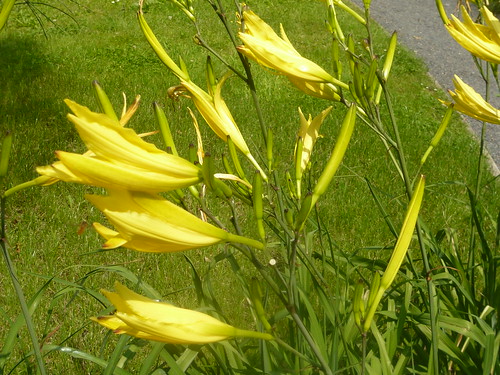Deadheading Gets More Flowers
Don’t let them seed until you have had the fill of flowers from your plants.
Encourage your plants to go on flowering by taking off the dying and dead flowers to encourage more flowers.
Why is deadheading necessary?
Cutting off the spent flowers before they put energy into seed production is called Deadheading. It is worth doing that now (Mid April) to your Daffodils so the bulbs get the energy for next year.
Many plants particularly bedding plants will flower again and again if deadheaded. Flowers are pre-programmed to go on flowering until they have set seed, as part of species survival. Once they have set seed they stop flowering.
Deadheading tidies up plants that may otherwise get damaged or look unsightly.
Many shrubs will put energy into new growth for next season.
You can extend the flowering period or get a second flush of flowers on Lupins for example.
Deadhead to stop prolific plants from self-sowing in places you do not want and all weeds.
How you Deadhead
Prune the spent or finished flowers or pinching them off with your fingers.
For plants with lots of tiny flowers it may be easier to deadhead by shearing back the whole plant.
Cut off Lupin spikes as the bottom flowers turn to seed so you get a second flush.
What not to Deadhead
Plants grown for the beauty of the seedhead like late flowering clematis Honesty and Nigella.
Plants grown for their winter berries such as Pyracantha and Roses grown for Hips (Rugosa types).
Ornamental grasses and plants that will not flower again that year like Poppies.
Plants that keep on flowering or self-deadhead like Alyssum and modern Petunias.
Plants where you want to collect the seed or self sowers.

Key plants needing deadheading include Roses, Dahlias, Ruddbekia, and Pelargoniums (geraniums)
